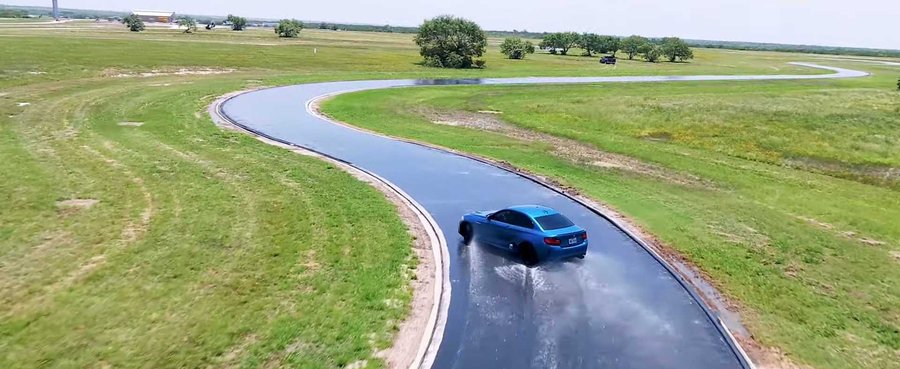Shocking Video Shows The Danger Of Mixing Cheap And Expensive Tires

Tires are vital to how a vehicle performs. That's a tremendous understatement, but it's worth repeating over and over because tire choice often doesn't get the scrutiny it deserves. We're not just talking about opting for generic all-season tires in winter, either. Tire choice is critical in all conditions for getting power to the ground, but beyond that, mixing different brands and types can create a dangerous, unexpected imbalance in grip.
This video from Tyre Reviews on YouTube showcases just that scenario. The test car is a BMW M2, sending 405-horsepower to the rear tires on a wet track as that's a condition where tire choice is both extremely critical, and most-often taken for granted. The test simulates a real-world situation where a throttle-happy driver might wear the rears out long before the fronts need replacing. It's tempting to go with a cheap off-brand pair of new tires as opposed to the original equipment, which in this case is represented by a set of high-end Michelins. As the video shows, doing that is a bad idea for several reasons.
For starters, mixing any tire brands will often result in a noticeable change in vehicle grip simply because they're different. Tire compounds, sidewall stiffness, tread pattern, these things all factor into a tire's performance and if all four don't match, things can be unsettling. As it stands, this video shows minor differences in wet lap times even with mixing high-end tires from different companies.
The real eye-opener, however, comes from installing a set of new budget-priced tires on the rear. Details on the exact brand and type of tire aren't revealed, so, unfortunately, there's no way to verify if this cheap pair is at least a high-performance design. Ultimately, it doesn't matter because the Bimmer oversteers with reckless abandon during both a timed lap, and during a casual drive at normal speeds. Sure, you can switch the low-grade tires to the front, but as the host of this video points out, the only benefit is that you'll be able to see what you're about to hit as opposed to spinning backward into it. Swapping tire locations only swaps rampant oversteer for rampant understeer.
The next time you're tempted with an inexpensive pair of replacement tires, keep this video in mind.
